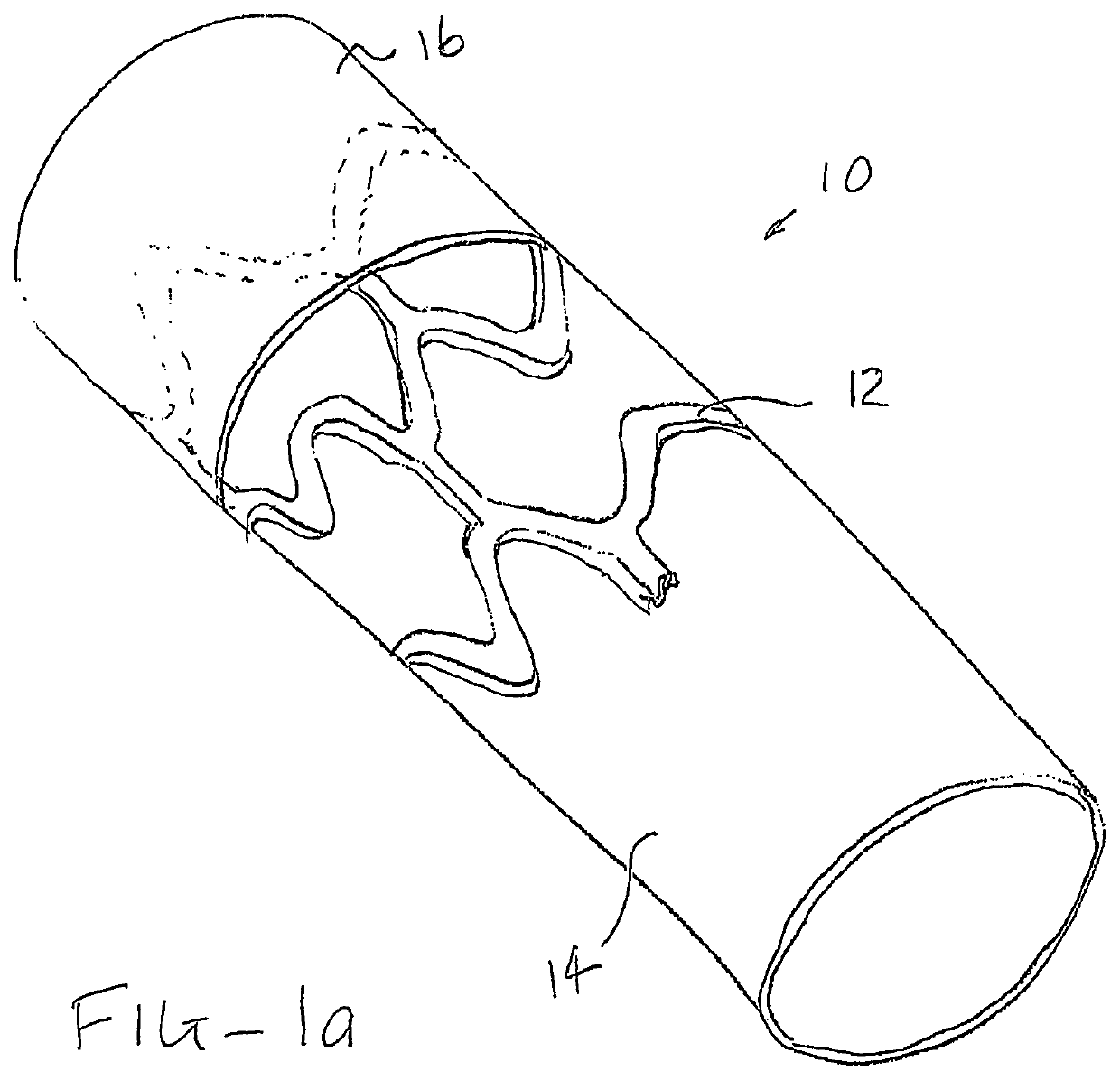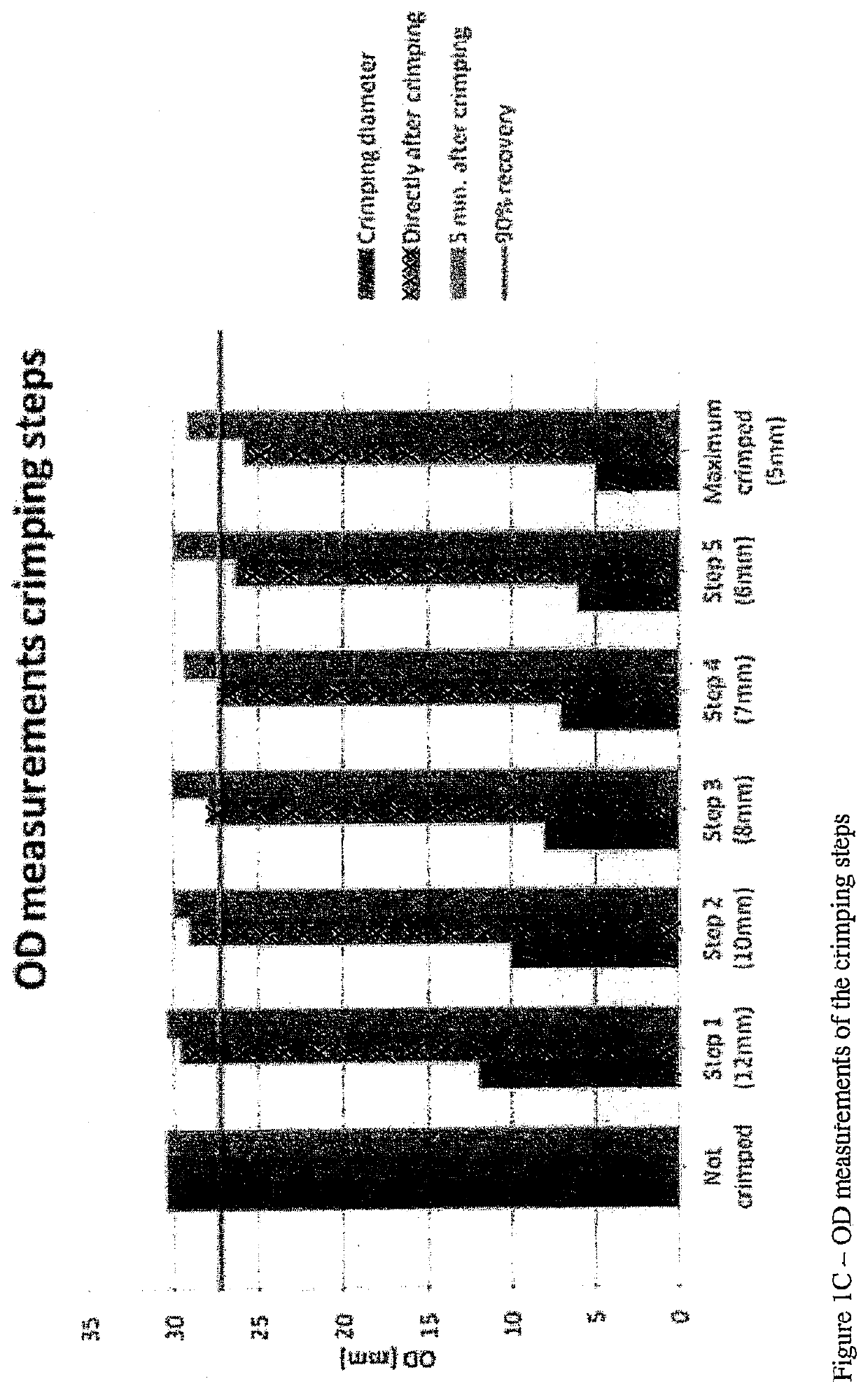Methods for electrospin coating and laminating of endoluminal prostheses
a technology of endoluminal prosthesis and electrospin coating, applied in the field of medical devices and methods, can solve the problems of dissolving the inner layer and creating an undifferentiated polymer mass, and achieve the effects of preventing rupture, promoting tissue-ingrowth, and inhibiting further dilation
- Summary
- Abstract
- Description
- Claims
- Application Information
AI Technical Summary
Benefits of technology
Problems solved by technology
Method used
Image
Examples
examples
[0032]Materials and Methods. Pictures were taken from the stent, before, during and after the experiment. Visual inspection was performed at all steps and written down in the study plan. In the study plan it was determined to crimp the stent to 12 mm, 10 mm, 8 mm, 6 mm, 5 mm and maximum possible for 5 minutes at each step. Because it was observed that it was most likely not possible to crimp the stent beyond 5 mm, an extra step of 7 mm was added. The outer diameter (OD) of the stent was measured and written down in the study plan, before crimping, directly after and 5 minutes after each crimping step. After crimping the stent to the maximum step of 5 mm, the stent was put into PBS. Pictures were made and the OD was measured at t=0, 5, 10, 15, 20 and 60 minutes. The ID of the sample that was tested was 30.30.080 T2.
[0033]The stents were prepared as follows. A first electrospinning solution was spun over a 29 mm cylindrical target, rotating at 100 RPM, to form the inner layer of the c...
PUM
| Property | Measurement | Unit |
|---|---|---|
| electromotive forces | aaaaa | aaaaa |
| electromotive forces | aaaaa | aaaaa |
| electromotive forces | aaaaa | aaaaa |
Abstract
Description
Claims
Application Information
 Login to View More
Login to View More - R&D
- Intellectual Property
- Life Sciences
- Materials
- Tech Scout
- Unparalleled Data Quality
- Higher Quality Content
- 60% Fewer Hallucinations
Browse by: Latest US Patents, China's latest patents, Technical Efficacy Thesaurus, Application Domain, Technology Topic, Popular Technical Reports.
© 2025 PatSnap. All rights reserved.Legal|Privacy policy|Modern Slavery Act Transparency Statement|Sitemap|About US| Contact US: help@patsnap.com



